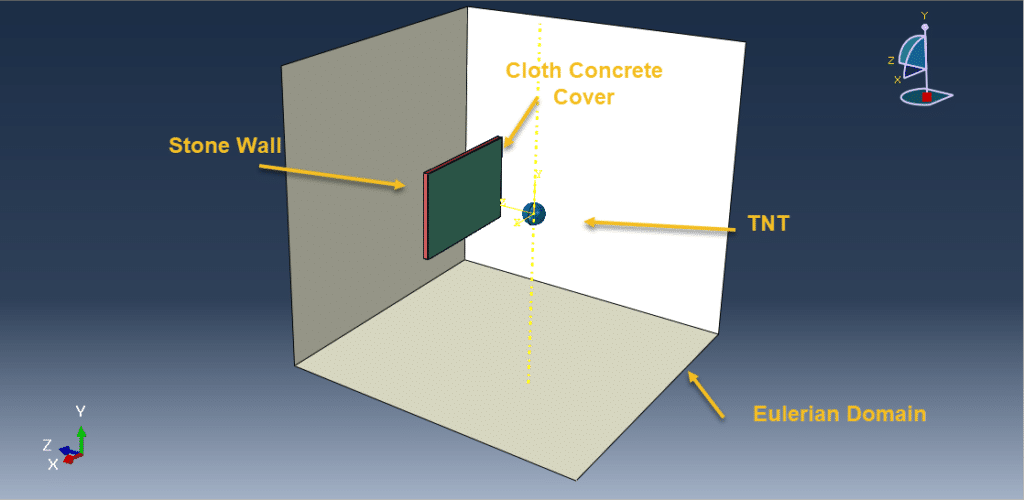

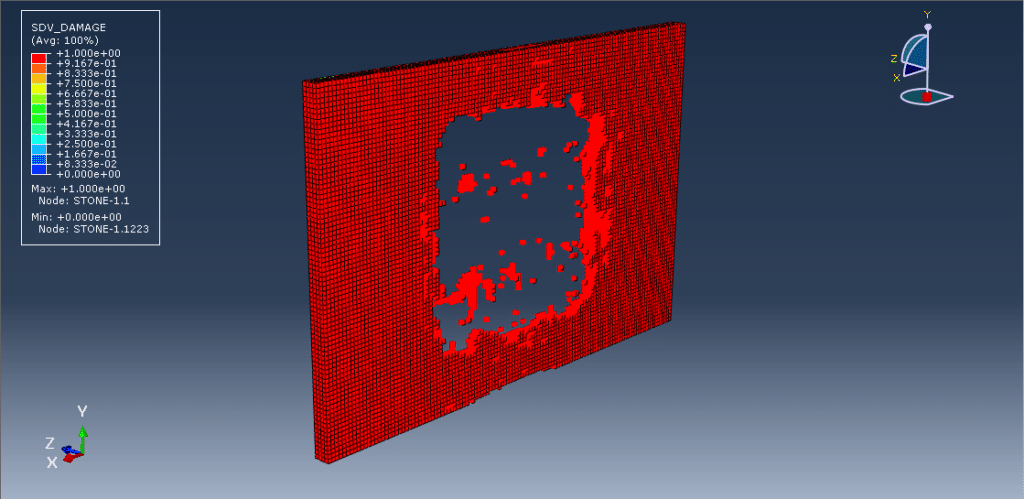
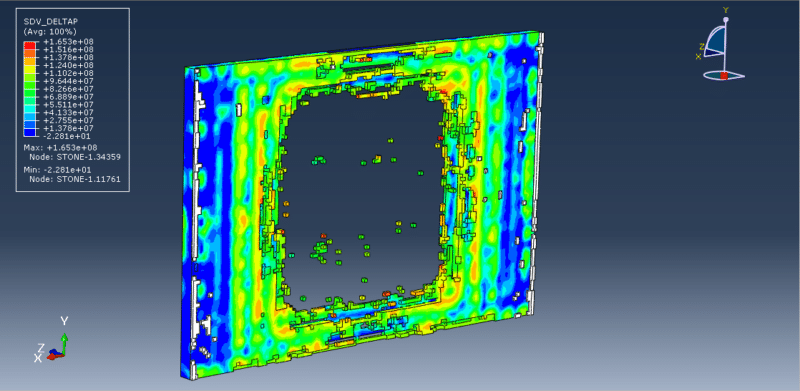
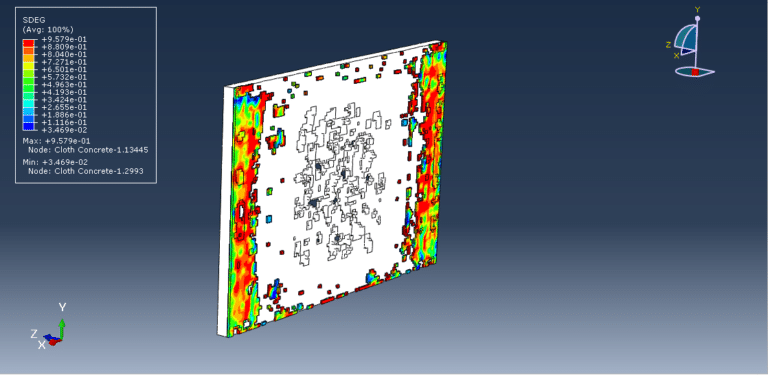
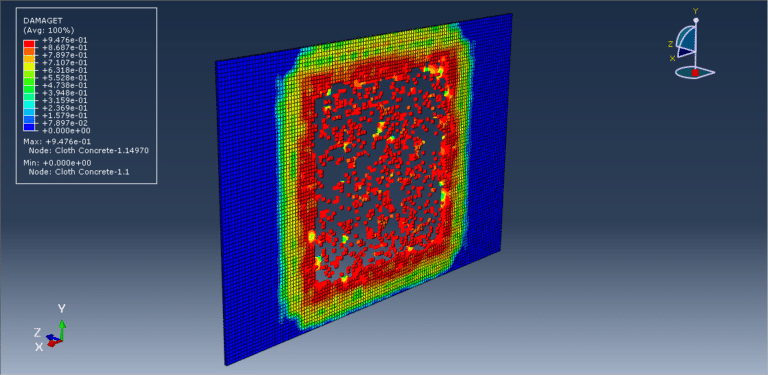
In this tutorial, the simulation of a CEL explosion near a stone wall covered with cloth and concrete has been investigated in Abaqus. The stone wall, cloth, and concrete cover are modeled as three-dimensional solid parts, while the TNT charge is modeled as a solid sphere inside a three-dimensional Eulerian domain. To represent stone behavior under extreme pressures, the Johnson-Holmquist material model is used, which is suitable for brittle materials subjected to high pressures, shear strain, and strain rates, and is widely applied in blast and ballistic impact simulations. The TNT is modeled using the Jones-Wilkins-Lee (JWL) equation of state, which describes the pressure-volume-energy relationship of detonation products. This programmed burn approach defines initiation by detonation speed and geometry rather than shock, ensuring a realistic simulation of explosive behavior. The cloth concrete cover is modeled using the Concrete Damaged Plasticity (CDP) formulation, which accounts for tensile cracking and compressive crushing as the two primary failure mechanisms of concrete. The analysis is carried out using a dynamic explicit step with a specified time duration, making it suitable for blast simulations. Proper interactions and constraints are applied to all parts, and the TNT volume and location are defined in the Eulerian domain using the volume fraction method. Mechanical and Eulerian boundary conditions are carefully assigned, and a refined mesh is applied to improve accuracy. After the simulation, results such as stress, strain, tension and compression damage, overall material damage, wave propagation, and blast density are obtained for evaluation.

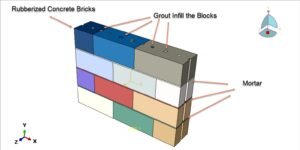
Abaqus
€79,00 €38,00
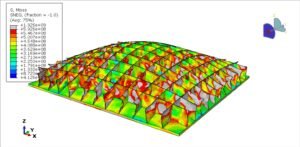
Abaqus
€68,00 €34,00
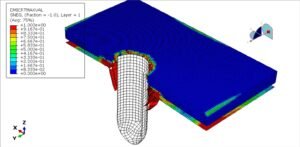
Abaqus
€77,00 €39,00
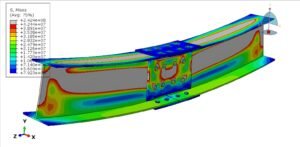
Abaqus
€79,00 €39,00
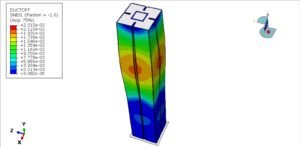
Abaqus
€75,00 €37,00
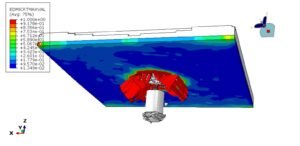
Abaqus
€76,00 €38,00
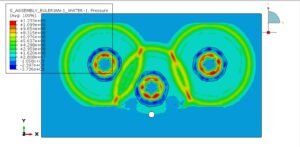
Abaqus
€79,00 €38,00
See more

Want to receive push notifications for all major on-site activities?